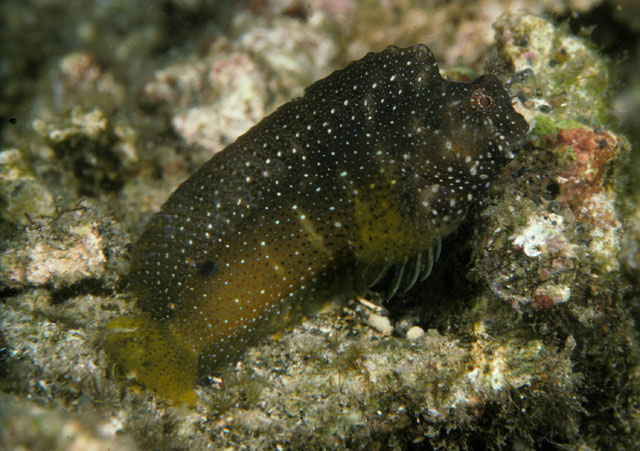| Blenniidae (Combtooth blennies), subfamily: Salariinae |
| 14 cm TL (male/unsexed) |
|
benthopelagic; brackish; marine; depth range 1 - 15 m |
| Western Central Pacific: Philippines to northwestern Australia. |
|
White frills on the head; dark brown body with numerous small pearly spots and few white blotches over back (Ref. 48636). |
| Adults occur in shallow, protected inshore reefs and in estuaries to depths of about 15 m (Ref. 48636); also on sand-weed areas on rocky outcrops. They form small groups, usually seen near reef rubble margins of coral reefs (Ref. 48636). Also found solitary on rock or coral outcrops (Ref. 90102). Oviparous. Eggs are demersal and adhesive (Ref. 205), and are attached to the substrate via a filamentous, adhesive pad or pedestal (Ref. 94114). Larvae are planktonic, often found in shallow, coastal waters (Ref. 94114). Minimum depth of 1 m reported from Ref. 90102. |
|
Least Concern (LC); Date assessed: 27 March 2009 Ref. (130435)
|
| harmless |
Source and more info: www.fishbase.org. For personal, classroom, and other internal use only. Not for publication.

